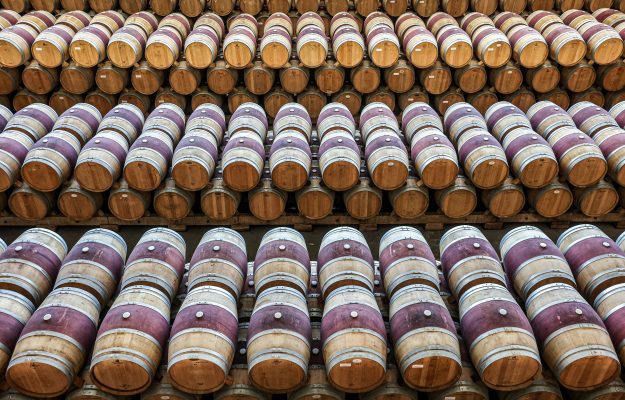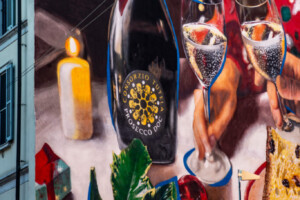The price of common wines falling, even significantly, and that of the most prestigious and listed appellations that is stable or growing. Halfway between the end of the 2022 grape harvest and the end-of-year holidays, which are decisive for the budgets of Italian wineries, this is the summary scenario that comes from the WineNews analysis between the updated quotations of the Chambers of Commerce, to which the prices of the most emblazoned appellations belong, and the price trend of common wines recorded by Ismea.
On the latest monitoring at the end of July, in the pre-harvest phase, the prices of the big red denominations, namely Brunello di Montalcino, which touches 1,200 euros per hectolitre, Amarone della Valpolicella, which heels it at 1,150 as the highest quotation, and Barolo, above 900 euros, are all on the rise.
But let’s go in order, starting, by value of the most quoted appellation, with Tuscany. According to the Chamber of Commerce of Siena, as of November 23, 2022, Brunello di Montalcino 2018, which enters the market in January 2023, ranges between 850 and 1,100 euros per hectolitre, while the 2017 vintage (which enters the market in the Riserva version, ed.), ticks off quotations between 950 and 1,200 euros per hectolitre. Quotations for Rosso di Montalcino are also sustained: they start at 300 euros per hectolitre for both the 2020 and 2021 harvests, touching 450 euros per hectolitre in the first case, and 400 in the second. It ranges between a minimum of 275 euros for the 2017 vintage and a maximum of 345 euros for the 2020 vintage for Chianti Classico from the vintages between 2017 and 2021, while it moves between 340 and 390 euros per hectolitre for Nobile di Montepulciano 2019, just above the values of 2017 and 2018.
In Piedmont, on the other hand, according to the Cuneo Chamber of Commerce, with data updated as of September 28, 2022, the 2017 Barolo Docg fluctuates between 810 and 890 euros per hectolitre, while the 2018 vintage ranges between 851 and 914 euros per hectolitre (prices, in this case surveyed in July-August), while for the 2019, which will go on the market in January 2023, prices are not surveyed. They are, however, for the same vintage of Barbaresco, which ticks prices between 623 and 650 euros (falling between 476 and 490 euros per hectoliter for the 2018 vintage).
In the Veneto, again, as of November 21, according to the Verona Chamber of Commerce, Amarone and Recioto della Valpolicella 2019, 2020 and 2021 are moving between 1050 and 1100 euros per hectoliter, and between 1,100 and 1,150 for the Classico version, while Ripasso ranges from 320 to 340, rising from 360 to 390 for the Classico version. While among the whites, Lugana stands out, with values between 380 and 360 euros per hectolitre. On the Prosecco front, however, the data are from the Treviso Chamber of Commerce, updated as of Nov. 22. Prosecco Doc is moving between 205 and 225 euros per hectolitre, rising to 230-240 for Docg Asolo, while Docg Conegliano Valdobbiadene fluctuates between 300 and 315, a range that widens between 305 and 320 for the Rive type, and that flies between 900 and 1,000 euros for Cartizze (which due to the small production numbers, however, in fact does not trade in bulk, ed.)
Within this framework, however, prices for common wines are falling sharply: as of October 2022, according to Ismea, prices for whites, on average, are moving at 3.88 euros per hectoliter, down -9.2%, while common reds are down as much as -15.8%, to 3.67 euros per hectoliter. Value data that tell of a resilience of higher-end wines, and a tension on prices that, instead, is easing for common ones. And which go hand in hand with those, which are clearly growing, of cellar stocks: as of October 31, 2022, there were 46.6 million hectoliters of wine (+26.4%), 17.7 million hectoliters of musts (+98.1%) and 15.1 million hectoliters of new wine still in fermentation (+3.6%) in Italy. With 52.1% of stocks made from PDO wines, and 26.3% from PGI, according to the latest “Cantina Italia” report from the Ministry of Agriculture.
Copyright © 2000/2025
Contatti: info@winenews.it
Seguici anche su Twitter: @WineNewsIt
Seguici anche su Facebook: @winenewsit
Questo articolo è tratto dall'archivio di WineNews - Tutti i diritti riservati - Copyright © 2000/2025









































































































































































































